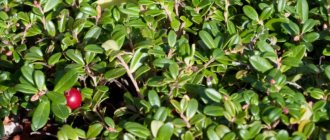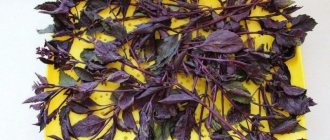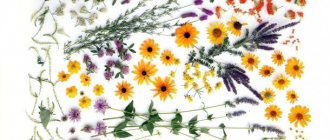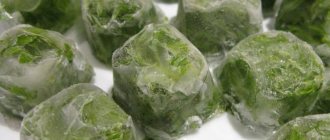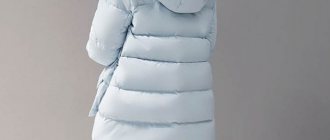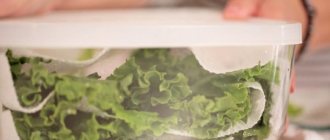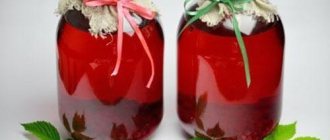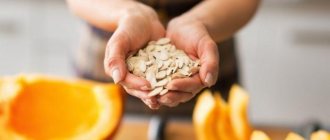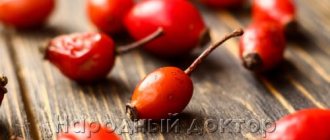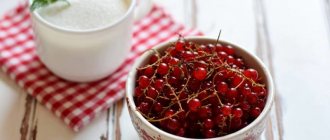Benefits of dried black and red currant leaves
The currant bush contains many useful microelements, vitamins and amino acids. Thanks to this, the collection is famous for:
- immuno-strengthening properties;
- anti-inflammatory effect;
- beneficial effect on the circulatory system;
- disinfecting effect.
Currant leaves are especially useful for older people. Infusions and teas are often used to strengthen blood vessels, maintain the quality of vision, they stimulate the heart muscle and relieve atherosclerosis.
Where is it used?
The beneficial substances contained in black currants are widely used in various spheres of life. Many medications for arthrosis or to improve vision include extracts from currant leaves.
Important! Before use, both externally and internally, it is recommended to make sure that there is no allergic reaction and consult with your doctor about the effect of decoctions of currant leaves on blood cells.
In cooking
Currant berries are more often used in cooking, the rest being used in medicine and cosmetology. However, connoisseurs will find use for other parts:
- Decoctions and teas are brewed based on various herbs, which are used internally as a preventive measure and to eliminate problems with blood vessels.
- Just like cucumbers and tomatoes, sometimes the leaves are pickled. The spicy additive goes well with meat, poultry and various salads.
- Currant leaves are often added when making homemade wines and liqueurs.
In folk medicine
Traditional medicine is also full of recipes for drugs based on currant leaves. Decoctions are used for diseases such as:
- rheumatism;
- stagnation of bile in the body;
- problems with digestion and metabolism;
- colds, to increase sweating and remove phlegm;
- decreased immunity;
- failure of the cardiovascular system.
See also
Description of black currant variety Riddle, features of planting and careRead
Important! It is recommended to take it with caution for people with low blood pressure, since decoctions of currant leaves can also affect blood pressure levels.
In cosmetology
In cosmetology, currants are also used to renew and regenerate the skin, give a healthy complexion and cleanse the body from the inside. The antiseptic properties of the plant make it possible to create and use ointments that help get rid of minor scratches and successfully fight acne.
Contraindications
Despite the fact that currant leaves provide great benefits, they can cause harm in some cases. For example, provoke an allergic reaction. Except in cases of individual intolerance, they should be used with extreme caution in the following categories of persons:
- with high blood clotting or thrombophlebitis;
- with liver diseases (hepatitis);
- with gastrointestinal problems - gastritis, ulcers and increased stomach acidity.
During pregnancy and breastfeeding, medicinal decoctions of currant leaves can be used, but only in small quantities. It is better to consult a doctor first.
It wouldn’t hurt to get a specialist’s opinion before starting long-term treatment for other categories of people.
Which leaves are suitable for winter harvesting?
To get the maximum amount of nutrients and preserve the aroma and taste of currant leaves until winter, you need to be careful when picking them. It is not recommended to use leaves affected by fungus or to tear greens from the lower hard part of the bush. Infectious damage to a plant not only deprives it of its positive qualities, but can also negatively affect the health of the recipient.
How should dried collection be stored?
Dried currant leaves also need to be stored correctly. If storage recommendations are not followed, there is a risk of mold formation on the sheet plates and the proliferation of harmful insects.
Is it worth freezing?
Freezing allows you to create a kind of semi-finished product from currant leaves, which retains the maximum of its original benefits. However, the aroma of such raw materials is weakly expressed, as is the taste.
This method of storing collections has some nuances:
- Before final freezing, the leaves need to be cut into portions and placed in plastic portion bags. Be sure to release the air from the bags to avoid breaking the seal.
- Repeated freezing will not benefit the harvest. So think about the packaging technology in advance so that each portion is used immediately without leaving any residue.
- Some people prefer to flatten each bag and freeze the leaves in that shape. This method allows you to break off the right amount each time without defrosting the entire bag. Leftovers can be safely returned to the freezer without loss.
In the natural environment
Immediately after drying, place the herbs into glass jars with tight-fitting lids. Please note that containers must be completely dry and preferably sterilized. If you close the herb in a slightly damp jar, then over time mold and mildew will appear there and the collection will deteriorate.
Instead of glass containers, you can take paper bags or bags made from natural fabrics. For convenience, you can break the raw materials into pieces; this will not affect the quality of the product:
- Store jars, bags, packages in a dark and dry place. Storage temperature should be room temperature. Kitchen cabinets or pantries are best for storage.
- Never store herbal teas near odorous foods or spices.
- Do not store the collection in cabinets above the stove, where the temperature and humidity levels often rise. This will have a detrimental effect on the dried products; you will no longer be able to use them.
Any dried herbal teas can be stored for 2-3 years. They retain their useful maximum for that long. But you shouldn’t store the blanks for so long; update them annually.
Important! If dried herbal collection is stored incorrectly or for a long time, midges, bugs or larvae may appear in it. Inspect the preparations every month to avoid the appearance of harmful insects.
When to collect?
The optimal time to collect currant leaves for making tea is early July. The bushes at this moment are young and contain the most significant amount of vitamin. Some gardeners do not want to disturb the young bush and begin harvesting only in August. However, at the end of summer, the lower part of the bush hardens and loses some of its properties.
Some toxic substances also accumulate there, so when collecting leaves at the end of the season, it is recommended to give preference to the top.
Chemical composition
All above-ground parts of the bush have positive properties - berries, shoots and leaves. Each of them is used in medicine for the preparation of medicinal potions and herbal preparations.
Currant greens contain the following valuable components:
- the main vitamins necessary for the functioning of the body - groups B, A, C, E. The concentration of ascorbic acid is especially high (from 100 to 400 mg per 100 g);
- minerals - magnesium, potassium, phosphorus, sodium, copper, manganese. It contains sulfur, silver and lead in small quantities;
- the foliage is especially rich in essential oils and phytoncides - thanks to the former, it has a surprisingly pleasant aroma, and the latter are natural antibiotics;
- tannins have anti-inflammatory, hemostatic and antibacterial properties;
- flavonoids (catechins, proanthocanidins) are strong antioxidants.
Thanks to the combination of such valuable components, currant leaves can cure many diseases.
How to properly dry currant leaves?
It is not enough to collect the leaves in time; it is also important to dry them properly. To do this, it is recommended to follow three fundamental rules:
- the presence of constant heat in the drying area;
- humidity should not be allowed to increase;
- Avoid exposure to direct sunlight and elevated temperatures.
Important! Failure to comply with the rules for processing and drying currants will not affect the taste and aroma properties of the collection, but will destroy most of the medicinal effects.
On open air
Drying the currants outdoors is the first thing that comes to every gardener’s mind. The method does not require additional effort, preparation or equipment. It is enough to find a place that meets all the parameters: dry, warm, not sunny.
See also
What to do if red spots appear on currant leaves, the best means to combat itRead
In the oven
When weather or other conditions do not allow drying currants in the open air, experts advise using the oven. However, the leaves need to be dried, not baked or fried. For this:
- the temperature in the oven should not exceed 100 degrees;
- It is recommended to lay out the collection in one layer;
- the oven door must be opened slightly to prevent steam from accumulating;
- darkening of the leaves indicates that they are burnt and are not suitable for use.
In a special dryer
If you have a special electric dryer for processing fruits, it is recommended to use it. Typically, such devices have a “Herbs Drying” function. However, the absence of such a mode is not a reason to be upset; simply the minimum temperature will do. The leaves are laid out on a baking sheet in a thin layer, otherwise the aroma will become musty. The advantage of an electric dryer is that the leaves cannot be overdried or fried.
Fermentation
The longest and most labor-intensive process, but connoisseurs note it as the best for preserving all properties. The fermentation procedure takes place in several stages:
- It is necessary to bring the leaves to a state of lethargy so that the veins stop crunching and breaking when bent (6-24 hours).
- Next, you need to squeeze the juice out of the leaves (cut, press, grind through a meat grinder). The amount of juice directly affects the aroma of the collection.
- At the end it is recommended to dry it in any convenient way. It is important not to overdry the leaves, otherwise all previous efforts will be nullified and the tea will lose its aroma.
Methods for drying leaves
Black currant leaves are often an integral component of homemade wines and liqueurs.
If it is not possible to dry it outdoors or the weather conditions simply do not allow it, then you can do it in a conventional oven. The temperature there should not exceed 100 °C. The foliage is laid out in one layer, and the door is left slightly open so that vapors do not accumulate. It is important that the leaves do not darken. Otherwise, they will no longer be suitable for use.
They are included in marinades for tomatoes and cucumbers, and serve as a spicy seasoning for meat dishes and poultry.
People suffering from low blood pressure should take blackcurrant leaves with extreme caution, as they tend to affect this indicator.
Now that you know when to pick currant leaves for tea, you can consider half the job done. But it’s not enough to collect it; you also need to properly prepare it for subsequent storage. In principle, there is nothing complicated about how to dry currant leaves. Three rules are important here: dry air, warmth and no direct sunlight. If you find such a place in your home, you can safely lay out the prepared raw materials.
We have chosen the optimal place, laid out the leaves, and now you can calmly wait for it to dry completely. Don't forget to check them periodically for mold or rot. If there are any leaves, remove them immediately, check the rest of the workpieces and change the substrate. As soon as the currants have become brittle, you can collect them in a bag or jar and put them in a dark and dry place. Your future tea is ready.
The content of the article:
Folk recipes for healthy and tasty tea
Currant leaves are suitable for single and mixed brewing. The most delicious and popular combinations are:
- currants and mint;
- green tea and lemon;
- ginger and honey.
It is also recommended to add currant leaves to regular tea in the evening to prevent diseases. This improves sleep and relieves fatigue.
How to properly brew tea from currant leaves?
Currant leaf tea can be brewed together with regular tea or separately. It should be understood that freshly brewed tea has the greatest benefits. For brewing, you can use a regular kettle or thermos. The proportions are approximately like this:
- 1 teaspoon tea
- 1 cup of boiling water.
Cooking time is about 10-15 minutes.
